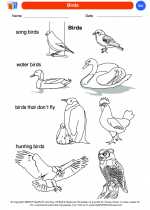What is Air Pressure?
Air pressure is the force exerted by the weight of air in the atmosphere. As you move higher in the atmosphere, the air becomes less dense, and thus the air pressure decreases. Conversely, as you move closer to the surface of the Earth, the air becomes more dense, and the air pressure increases.
Factors Affecting Air Pressure
Several factors can affect air pressure, including temperature, altitude, and weather systems. As air is heated, it becomes less dense and rises, creating an area of low pressure. Conversely, as air cools, it becomes denser and sinks, creating an area of high pressure. These pressure differences contribute to the movement of air masses and the formation of weather patterns.
Measuring Air Pressure
Air pressure is often measured using a device called a barometer. There are two main types of barometers: mercury barometers and aneroid barometers. Mercury barometers measure air pressure by the height of a column of mercury, while aneroid barometers use a flexible metal box to detect changes in pressure.
Effects of Air Pressure
Air pressure plays a crucial role in various natural phenomena. For example, differences in air pressure contribute to the formation of winds, which in turn influence weather patterns. Additionally, air pressure can affect human activities such as scuba diving, where changes in pressure can lead to physiological effects on the body.
[Air Pressure] Related Worksheets and Study Guides:
.◂Science Worksheets and Study Guides Kindergarten. All About Animals

 Coloring Worksheet
Coloring Worksheet
 Coloring Worksheet
Coloring Worksheet
 Coloring Worksheet
Coloring Worksheet
 Coloring Worksheet
Coloring Worksheet
 Coloring Worksheet
Coloring Worksheet
 Coloring Worksheet
Coloring Worksheet
 Coloring Worksheet
Coloring Worksheet
 Coloring Worksheet
Coloring Worksheet
 Coloring Worksheet
Coloring Worksheet
 Coloring Worksheet
Coloring Worksheet
 Coloring Worksheet
Coloring Worksheet
 Coloring Worksheet
Coloring Worksheet
 Coloring Worksheet
Coloring Worksheet
 Coloring Worksheet
Coloring Worksheet
 Coloring Worksheet
Coloring Worksheet
 Coloring Worksheet
Coloring Worksheet
 Coloring Worksheet
Coloring Worksheet
